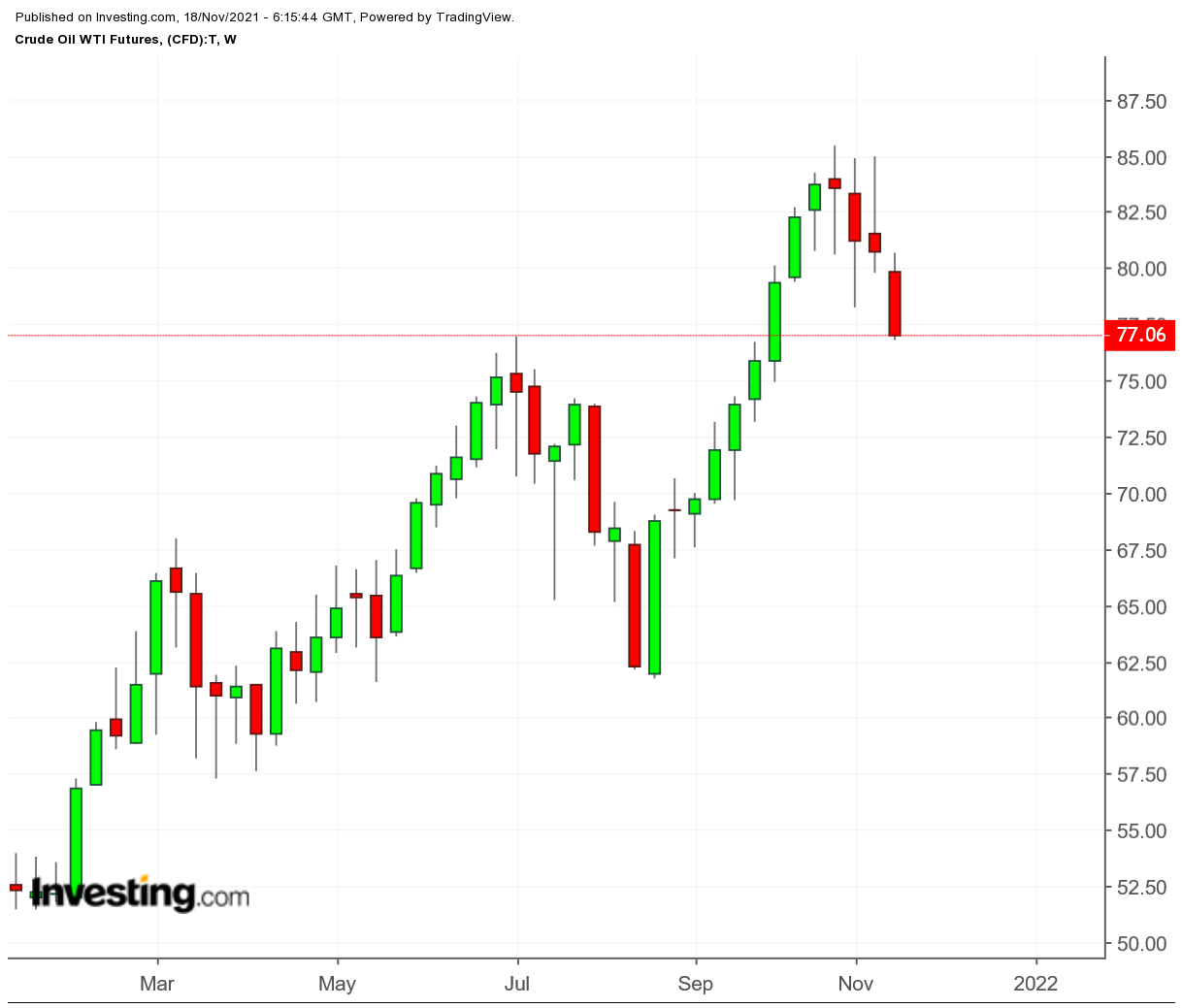SoFi stock falls after announcing $1.5B public offering of common stock
There is a growing divide between the oil market forecasts coming from financial institutions and those coming from organizations and agencies involved in assessing the industry. OPEC, the IEA, and the EIA have all recently come out with new forecasts showing that the oil market is poised to switch from under-supplied to over-supplied much sooner than previously predicted. Which could, of course, help pressure prices lower.

Banks, on the other hand, continue to stand by their forecasts predicting that oil prices are poised to move even higher—in some cases into the triple digits.
Here's a deeper look into the factors underpinning each of these forecasts and what traders should pay attention to from each in the short-term.
OPEC
OPEC’s latest monthly oil market report revised its expectation for global oil demand down by 160,000 bpd, only expecting a total average of 96.4 million bpd for 2021. The group also pushed back its prediction for a return to pre-pandemic consumption levels to later in 2022.
OPEC Secretary General Mohammed Barkindo delivered an even more bearish forecast at a panel at the ADIPEC conference in Abu Dhabi, telling attendees that OPEC sees the supply and demand situation as shifting more quickly than previously forecast. He said that the global oil market is now expected to become over-supplied as early as December.
Some of the reasons given for this shift include evidence that oil stockpiles have been building for the past 6 weeks when the group previously believed stockpiles would not start to grow until early in 2022 and evidence that high energy prices are curbing demand, especially in India and China.
IEA
Earlier this week, the International Energy Agency (IEA) issued a new monthly market report that also predicts an easing of the tight supply and demand situation. The IEA expects oil supplies to increase by 1.5 million bpd between now and the end of 2021. It believes 750,000 bpd will come from Saudi Arabia, Russia (as per their plans to add production according to OPEC+’s scheduled quota increases), and producers in the United States.
Concurrently, the IEA forecasts that new waves of coronavirus in Europe and corresponding government restrictions along with weaker industrial activity due to higher energy prices will curb the market for oil more than previously anticipated.
EIA
In its latest Short-Term Energy Outlook, the U.S. Energy Information Administration (EIA) predicted that the pace of global oil consumption will slow and that supply growth from OPEC+, U.S. shale, and other non-OPEC producers will outpace demand in early 2022. In terms of oil prices, the EIA expects Brent to stabilize at around $82 per barrel and remain there for the rest of Q4.
Financial Analysts
Market reaction to these forecasts was muted, with oil prices only moving marginally on Tuesday. The reasons for this can perhaps be found in the statements coming from the financial industry, which is continuing to push forecasts that predict tighter supply and higher price movement.
Goldman Sachs recently said that it is sticking to its “bullish view.” In the opinion of its analysts, the global oil market will remain undersupplied and “the current strength in oil demand” will continue to push prices up. Goldman increased its oil price forecast from $80 per barrel to $90 per barrel.
UBS issued a similar report, saying it expects oil prices to remain “well-supported” into 2022 and sees Brent oil hitting $90 per barrel in December before leveling off at $85 per barrel in 2022.
A statement from a Commerzbank analyst earlier this week played down the new forecasts from OPEC and the IEA, saying that he expects that “the oil market will remain tight in the short term, which should lend support to prices.”
Bank of America took an even stronger stance for higher prices with a prediction that Brent crude will hit $120 per barrel in June 2022.
Takeaways
Traders should always assess market and price forecasts with a critical eye, because forecasts are rarely correct and should not be taken at face value. However, the factors that go into making these forecasts are key to understanding the market dynamics.
For example, OPEC places more emphasis on the growth or decline in global oil stockpiles as a market indicator than other institutions. OPEC is also more attuned to industrial weakness and transportation slowdowns in China, because its member nations are China’s top oil suppliers. It is possible, though, that these factors are over-weighted in its forecasts.
The EIA sees higher growth coming from the U.S. shale industry than other institutions. It is likely that the EIA is over-estimating the expected growth from the U.S. shale industry since it has been over-estimating production growth for most of 2021.
Banks, especially ones that are financially involved in companies producing oil in the U.S., may be under-estimating the potential for production growth in the U.S. Based on this relationship, they might be seeing information that the EIA has not considered, and, as occasional shareholders, they may be pushing their companies not to increase production.
However, there are new oil companies that aren’t saddled with debt and are receiving funding from private equity that are poised to drive some production growth in the near-term.
Traders should understand that banks are also market players and have taken positions of their own. It is convenient for banks to forecast higher prices when they have made their own bets in that direction.
